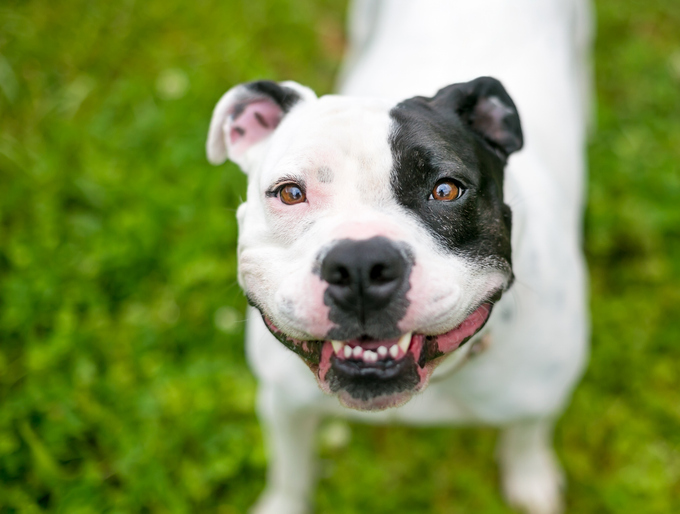
Periodontal disease, often referred to as dental disease, is one of the most common health problems in dogs. It affects not only the teeth but also the gums and the bone structures that support the teeth.
This progressive condition can lead to significant pain and discomfort for your pet, and if left untreated, it can cause more serious health issues that extend beyond the mouth.
Causes of Periodontal Disease
Periodontal disease starts with the accumulation of plaque—a sticky, colorless film of bacteria that naturally forms on the teeth after eating.
If this plaque is not regularly removed, it hardens into tartar, which adheres to the teeth and irritates the gums. The tartar, especially when it builds up under the gum line, triggers inflammation in the gum tissues (gingivitis) and can eventually lead to more advanced periodontal disease.
Over time, the bacteria in the tartar cause the gums to recede, exposing the tooth roots and leading to bone loss. Without intervention, this process can result in loose teeth, infections, and even tooth loss.
Symptoms of Periodontal Disease
Periodontal disease often goes unnoticed in its early stages because dogs can be very good at hiding discomfort. However, as the disease progresses, there are several signs that may indicate a problem. These symptoms can include:
- Discolored teeth: Yellow or brown tartar deposits are visible, especially near the gum line.
- Loose or missing teeth: As the bone around the teeth weakens, teeth may shift or fall out.
- Bad breath: Persistent foul odor from the mouth is a hallmark of dental disease.
- Weight loss: The pain associated with chewing may cause your dog to eat less or avoid food.
- Red, swollen, or bleeding gums: Inflammation and infection often lead to noticeable gum changes.
- Irritability or behavior changes: Dogs in pain may become more irritable or withdrawn.
- Chewing on one side: Your dog may favor one side of the mouth due to discomfort.
- Excessive drooling: Pain or difficulty swallowing may lead to increased salivation.
- Pawing at or rubbing the face: This could be a sign of pain or irritation in the mouth.
Risk Factors of Periodontal Disease
Certain factors can increase a dog’s risk of developing periodontal disease. Small-breed dogs are particularly vulnerable because their teeth tend to be crowded, which creates more areas for plaque and tartar to accumulate.
Older dogs are also at higher risk since dental disease is progressive and becomes more severe with age if not addressed.
Short-muzzled breeds (brachycephalic), like Bulldogs and Pugs, are more prone to dental issues due to the structure of their jaws and teeth.
Additionally, diets that consist mainly of soft foods and a lack of regular dental care, such as tooth brushing, can accelerate the development of periodontal disease.
Prevention and Treatment of Periodontal Disease
Early detection is crucial in preventing the progression of periodontal disease. Regular dental checkups and cleanings by your veterinarian are important, especially for dogs that are at higher risk.
A veterinarian or veterinary dentist will typically recommend a professional dental cleaning under anesthesia, during which the teeth are cleaned both above and below the gum line, and any loose or infected teeth may be extracted.
At home, prevention is key. Regular tooth brushing is one of the most effective ways to prevent plaque buildup. Special canine toothbrushes and toothpaste (never use human toothpaste) can help keep your dog’s mouth healthy.
There are also dental chews, treats, and water additives designed to reduce plaque and tartar. Feeding your dog a balanced diet, and avoiding excessive amounts of sugary or soft foods, can also help maintain good oral health.
Complications of Untreated Periodontal Disease
If left untreated, periodontal disease can have serious consequences beyond the mouth. The bacteria responsible for the disease can enter the bloodstream through the inflamed gums and travel to other organs, potentially leading to more systemic health problems.
The kidneys, liver, and heart are particularly vulnerable, with some dogs developing life-threatening conditions like kidney disease, liver inflammation, or bacterial endocarditis (an infection of the heart’s inner lining).
These complications underscore the importance of addressing dental disease early to avoid severe health risks.
Preventing Periodontal Disease in Your Dog
Periodontal disease is a preventable yet potentially dangerous condition in dogs. By recognizing the early signs and seeking veterinary care, you can help ensure your pet’s comfort and overall well-being. Regular dental care, both at home and through professional cleanings, is vital for preventing the progression of the disease and safeguarding your dog’s long-term health.

